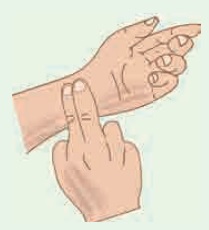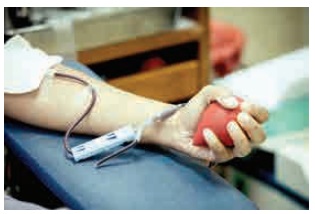Human Organ systems | Term 2 Unit 6 | 6th Science - Student Activities | 6th Science : Term 2 Unit 6 : Human Organ systems
Chapter: 6th Science : Term 2 Unit 6 : Human Organ systems
Student Activities
Activity 1: Sit absolutely still. Observe the movements taking place in your body. You must be blinking your eyes time to time. Observe the movements in your body as you breathe. Write down the movements in your note book.
We are able to move a few parts of our body easily in various directions and some, only in one direction. Why we are not able to move some parts at all directions?
Activity 2: To show that we can bend or move our body only at those points where the bones meet.
Materials required: A wooden scale and string.
Method: Ask your friend to tie a wooden scale and your arm together. So that the elbow is at the centre. Even if you try hard, you cannot bend your elbow.

Conclusion: A single bone cannot bend. The different bones joined together at the elbow, help the elbow to bend.
1. smallest bone in our body is present inside the ear. It is called Stapes. It is only 2.8 millimeters long (average length). The longest bone in the body is the thigh bone. (Femur)
2. A new born baby has more than 300 bones. As the baby grow, some bones are joined together, hence the skeleton of an adult has 206 bones
Activity 3: Move your lower arm up and down gently. Feel the contraction and relaxation of your biceps and triceps muscles. The muscles present in the upper arm help in the contraction of front biceps muscles (become short and thick), and also relaxation of rear triceps muscles (become long and thin). You can feel the muscles on top that go stiff. When the arm is moved downwards, the front muscles relax and the rear muscles contract.
Activity 5:
Aim: To prove that exhaled air is rich in carbon- di- oxide
Materials required: Two glass jars with lime water and a straw
Procedure: Leave the first jar with lime water undisturbed, blow air in to the second jar with the help of a straw
Observation: Lime water turns milky in few seconds in the second jar. The CO2 gas alone can change the lime water into milky white.
Conclusion: Carbon-di-oxide is present in the air that we exhale.
Each lung has about 300 million air sacs or alveoli.
Yawning helps us to take in more amount of O2 and to give out CO2
Activity 6: Place the middle and index fingers of your right hand on the inner side of your left wrist. Can you feel a throbbing movement. Why do you feel the throbbing? This throbbing is called the pulse and it is due to the blood flowing in the arteries. Count the number of pulse in one minute.
How many pulse beats could you count in one minute? The number of beats per minute is called the Pulse rate. A resting person usually has a pulse rate between 72 to 80 beats per minute.
Find other places in your body where you can feel the pulse. Record your own pulse beats and your classmates as beats per minute; Compare the values.

Donate Blood
Hospitals have blood banks where blood can be temporarily stored before it is given to the patients in need. Every healthy person over 18 years of age can donate blood. So that, it can be given to persons in need during emergencies of accidents or operations. Blood donation saves their life.

Related Topics